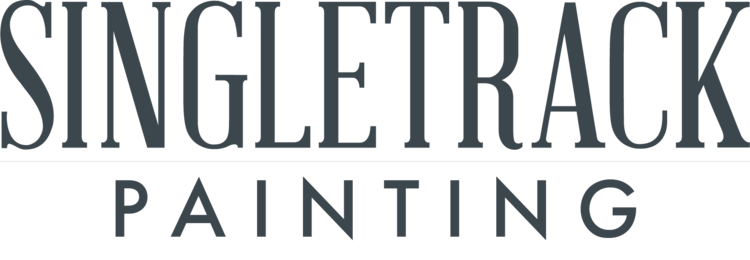How to Prep a House for Interior Painting
You've selected your perfect paint color and are ready to transform your interior rooms. But there's much more to interior painting than brushes, rollers, and pretty colors in paint buckets.
Knowing how to prep a house for painting the interior is key to a top-notch paint job. In Denver and the Front Range, your painting company will expect you, the homeowner, to complete certain prep work before their crew can begin the work. No matter how expert the painting crew is, they can't do their best job if you don't properly prepare your house for interior painting.
Maybe you didn't expect that you'd be responsible for prep. After all, shouldn't professionals include prep in their service? Actually, painters do include very skilled prep, such as filling holes, repairing wall damage, taping off unpainted areas, and so much more. But they count on you to move your furniture, personal belongings, and electronics. Also plan to remove wall decor and draperies. Read on to delve into your prep responsibilities.
How to Prep for Interior Painting in the Front Range: 6 Essential Steps
Interior painting prep is critically important for achieving a top-quality paint job. In the following section, we describe the kinds of prep you can expect from professional interior painting services. However, in this section, we outline the 6 essential steps you need to take for a top-notch paint job.
Move Your Furniture
The homeowner is responsible for making sure their furniture is moved in accordance with your painter's needs.
If you're just painting one or a few rooms, move your furniture to the center of the room. Use furniture slides to make the job easier.
Your painters will then thoroughly cover all furniture pieces, including the legs with plastic sheeting or painters' canvas.
Good masking will tape down the sheeting or canvas to prevent dust and paint splatters from sneaking in under the coverings.
If you're planning a complete interior paint job, consider hiring a professional mover to place your furniture and accessories in storage. Your belongings will be protected and the painting crew will be free to do their best work.
Remove Electrical Wall Plates
Some painting companies will remove and replace electrical wall plates. Be sure to ask.
If wall plate removal isn't included in the scope of their prep work, then you'll have to do it. No worries – it's an easy job.
Grab a screwdriver and get to work. As you work, keep all plates and screws together.
A good strategy is to fill a bucket with warm soapy water, then drop the plates and screws in the bucket as you remove them. After a good soak, rinse and dry them so they'll be fresh and clean when you reinstall them.
Your painting service will cover the electrical switches and contacts with painter's tape.
Cover Your Floors
Most painters consider this part of the process they are responsible for but always double check! Canvas drop cloths are often used on floors in combination with paper or plastic. Plastic sheeting is fine for covering furniture and accessories as well as floors. Painters generally use plastic with a heavier mil thickness for floors but caution is necessary since plastic can be slippery.
Advise your painter if you'll be installing new flooring of any kind. Hardwood floors are generally installed before painting. The carpet is installed afterward.
Dreaming of a New Look? Make It a Reality with Singletrack Painting!
Protect Electronics and Appliances
Unless hardwired, all electronics such as your TV, sound system, etc. should be disconnected and moved safely into non-painted areas.
Appliances such as stoves, refrigerators, washers, and dryers in painted areas must be disconnected and moved away from the walls.
Carefully cover appliances and hardwired items.
Remove All Wall Decorations, Paintings, Art Work, and Draperies
It's impossible for painters to work around anything that's left hanging on a wall.
Remove all art and wall decor, such as paintings, clocks, and mirrors and safely place them in a non-painted area.
While painters typically will remove blinds, you'll need to remove all draperies, shelving, and wall hardware.
Vacate the Rooms to be Painted
Brand-new paint is susceptible to bruising and dings, so give it time to cure before you and your furniture move back in.
Some paints may need time for fumes to off-gas.
Your painting crew will tell you when it's safe to move back in, and especially how long you'll need to wait before you can sleep in a room after painting.
What Part of Interior Painting Prep is the Responsibility of Professional Painters?
Certain prep falls to the homeowner, while other prep is the responsibility of the professional painter. To avoid confusion or misunderstandings, it's important to know what kind of prep you can expect from professional painters.
Before you schedule painting, ask your painter exactly what they expect you to do, and what they will do. In general, expect your pro painter to:
Tape off all non-paint areas such as window and door frames, built-ins, and trim.
Fill cracks and nail holes; spot prime; finish drywall, plaster, and texture work; and repair minor damage.
Remove and replace door and window hardware.
Match existing color transitions and the current paint scheme.
Include a detailed list of millwork to be painted, such as doors and trim.
Need a Helping Hand With Interior Painting in the Front Range?
Expert prep is critical to a professional, beautiful, long-lasting paint job. At Singletrack Painting, we complete the most difficult aspects of prep – jobs that require skill and experience. Our crews make sure your walls are carefully prepared before painting and then transform your home from blah to ahhh! Singletrack Painting is proud of our many years of experience with interior prep and painting in Denver and surrounding areas. Ask for a free quote today!
















